Jim Corbett National Park is the oldest national park of India established in the year 1936. Earlier it was named as Hailey National Park to protect the endangered species, the Royal Bengal Tiger. Project Tiger initiative was first started from Jim Corbett National Park. The park has sub-Himalayan belt geographical and ecological characteristics, an ecotourism destination of having 488 different species of plant and diverse variety of animals. click here
Brief History About Jim Corbett National Park :
Jim Corbett National Park has been a haunting place for tourists and wildlife lovers for a long time. Later tourism activity is only allowed in selected areas of Corbett Tiger Reserve so that people get an opportunity to see its landscape and wildlife. In recent years the number of people coming has increased significantly. Nowadays every season more than 70,000 visitors come to the park.
JimCorbett National Park comprises of 520.8 km2 area of hills, river belts, marshy depressions, grasslands, and a large lake. The elevation ranges from 1,300 to 4,000 ft. Winter nights are cold but the days are bright and sunny. It rains from July to September. Check here
Dense moist deciduous forest mainly consists of sal, haldu, peepal, rohini and mango trees. Forest covers almost 73% of the park, 10% of the area consists of grasslands. Corbett National Park is the house of around 110 tree species, 50 species of mammals, 580 bird species and 25 reptile species.
Efforts to save the forests began in the 19th century under Major Ramsay, the British Officer who was in charge of the area during those times. The first step in the protection of the area began in 1868 when the British forest department established control over the land and prohibited cultivation and the operation of cattle stations. In the year 1879, these forests were constituted into a reserve forest where restricted felling was permitted. In the early 1900s, several Britishers, including E. R. Stevens and E. A. Sm E. A. ythies, suggested the setting up of a national park. The British administration considered the possibility of creating a reservoir there in 1907. Go Here
The reserve was renamed in 1954–55 as Ramganga National Park and was again renamed in 1955–56 as Corbett National Park. The new name honors the well-known author and wildlife conservationist, Jim Corbett who played a key role in creating the reserve by using his influence to persuade the provincial government to establish it.
How to Reach Jim Corbett National Park
Jim Corbett National Park is well connected with road and rail network from the state capital of India. It is 260 km, from New Delhi by road via Delhi-Gajrola-Kashipur-Ramnagar road. The best option to go there by booking a taxi or by going with your own car as Volvo bus services are not there to this place. By rail one can go from Delhi to Ram Nagar is 238 km and from Ram Nagar, it is only 12 km. The best option to choose if you are going by train is either you should book a ticker in Ranikhet Express or in Uttaranchal Express. Hurry!
What to See in Jim Corbett National Park
Jim Corbett National Park is among the few tiger reserves in India that allow overnight stays in the lap of nature. Nature watch and wildlife spotting in the park is done in an open four wheeler Jeep and on an elephant safari. Sheltering a healthy population of Royal Bengal Tigers and rare species like Otters and the endemic fish-eating crocodile, the national park is one of the most sought after destinations for the wildlife buffs. Dhikala, situated at the border of the extensive Patil Dun valley, is the most popular destination in Corbett because of its superb location and sheer abundance of wildlife stocks. Let's discuss the places one can visit in Jim Corbett National Park. See This
Garjia Temple :
Garjia Devi Temple is situated at an approximate distance of 14 km from Ramnagar on the way to Ranikhet.
The temple is actually a gigantic rock that is placed amidst river Kosi, which has been named as Garjia
Sitabani Forest Reserve :
Devi after the goddess. Devotees reach the temple after climbing several flights of stairs. Temple attracts thousands of disciples from across the globe. Newlywed Couples coming to Corbett must seek the blessings of Garjia Devi.
Located at an average distance of 10 km from Ramnagar, Sitabani is a deep forest area but not the part of Jim Corbett Tiger Reserve. Sitabani is a heavenly place for bird watchers as it is only spot where many species of feathered creatures beautify the environs of an area. Apart from the reserve provides an adobe to a good number of wildlife including barking deer, Royal Bengal tigers, leopard, wild boars, elephant and king cobra. The place has historic importance too; associated with the epic Ramayana, it is envisaged that Sitabani is the same place where Goddess Sita (wife of Lord Rama) spent her days of expulsion. Declared as buffer zone area by the forest department, only two modes of transport is allowed - Elephant and Jeep Safari. Check here!
Dhikala Tourism Zone :
Dhikala is a well-known tourist destination in Jim Corbett National Park. Located at the border of the extensive Patil Dun valley from where the Ramganga flows in numerous pathway. Literally, Dhikala is situated approximately at a distance of 35 km from Dhangarhi Gate, promising the more real experience of the wild. Dhikala forest lodge is the sole place in Indian National Park that permits night stay in the lap of nature. Hard core wild life activists recommend this place to find accommodation in. It offers an outstanding view of the valley, with the Kanda.
Jim Corbett Water Fall :
Situated at an approximate distance of 25 km from Ramnagar City . The waterfall is snuggled amidst the green foliage and cascades down into a small lagoon like pool. It is a best picnic spot for groups visiting Corbett National Park. Tourist can enjoy swimming and can refresh all the senses of the body.
Kosi River :
The River Kosi flows aside from the Jim Corbett National Park almost in all area and forms the eastern boundary of the Park. Though the river does not enter the National Park boundary wild animals from Jim Corbett come to the river banks for drinking water especially during pinch periods of Summer. The river is inhabited by Masheer and attracts many species of migratory birds too. So the area is best for bird watching and photographing them. It is a hot and happening place for young travelers, sitting at the banks of the river in the evening time, having a sip of beer and you can read your favorite book. Go
Dhangarhi Museum :
Dhangarhi gate is situated 20 km from Ramnagar railway station. The museum has been set up at the main entry gate of the park is like an introduction to Jim Corbett National Park. The museum depicts the maximum information about the land topography and wildlife species residing in the park.
Bijrani Tourism Zone :
Bijrani Tourism Zone is the premium zone of the park, known for its exotic flora and fauna and amazing vegetation. Bijrani is one of the highest wildlife occupied Tiger Reserve Area of Corbett National Park. The entry point of this zone is Amdanda Gate near Ramnagar. Travelers may have the highest possibility of tiger spotting during Bijrani Jeep Safari. A healthy population of wildlife, open grasslands, deep & dense forest with stormy drains is some of the major attractions of Bijrani wildlife zone.
Jim Corbett National Park Safari Zones :
Jim Corbett National Park is divided into the five ecotourism zones for the proper management of the tourism activities in the tiger reserve area. These zones are Dhikala zone, Bijarani zone, Jhirna Zone, Dhela zone and Durga Devi zone. The safari tour is organized by the forest officials of Corbett tiger reserve in two shifts for all of the ecotourism zones. The limited numbers of safari jeep are allowed in every zone to ensure the proper distribution of tourist flow in all the zones. Each zone has its own natural charm with its specific landscape beauty and wildlife. However, the tiger sighting is more or less equal in every zone along with the little bit of difference in topography as all the zones are the part of the same ecological land. See
Here are some brief introductions all about the five tourism zones for which safari tour is organized in the Corbett National Park. Let's have a video watch on Jim Corbett National Park.
Jhirna Zone, Entry Gate: Dhela Gate, 15 km from Ramnagar
- · Open Period for Safari Tour: Throughout the year (subject to weather condition)
- · Safari Offered: Day Jeep Safari
- · Maximum Number Of Safari : 30 Jeeps in One Shift
- · Forest Rest House: Jhirna FRH, Dhela FRH
Located on the southern edge of the Jim Corbett National Park, this zone is included much later in the tiger reserve zone, in the year 1994 and got immense popularity among the wildlife lovers. As Jhirna zone is open for the day tourists throughout the year, so it is one of the most visited zones in the Corbett Reserve forest. The tiger sighting in this zone is reported frequently and also a wide range of wildlife species found in this region. Along with the majestic tigers, the wild bears are the main attraction of this zone. Other animals like wild elephants, sambar and various species of deer along with a large number of bird species are found in this zone. Two shifts of the day safari are allowed in this zone with the 30 jeeps in one shift. You can book the Jeep safari online with a maximum of the 6 adults and 2 children in one Jeep. As per the rule, a naturist/guide is mandatory with each jeep. Watch here
Dhela Zone, Entry Gate: Dhela Gate, 15 km from Ramnagar
- Open Period for Safari Tour: Throughout the year (subject to weather condition)
- Safari Offered: Day Jeep Safari
- Maximum Number Of Safari : 15 Jeeps in One Shift
- Forest Rest House : No FRH in this zone
The Dhela zone is the latest added zone in the tourism zones of the Jim Corbett National Park that was opened in December 2014 for the safari tour. This zone is also remains open all round the year for the tourists as like the Jhirna zone. However, the safari tour depends on the weather condition. The zone consists of mix topography which includes the dense forest of trees like Sal, Haldu, Bahera, Rohini and Kusum along with the large grasslands and various water bodies. This zone is rich in the fauna species too with the animals like the Royal Bengal tiger, leopards, wild elephants, Nilgai, different species of Deer, wild bears and the various species of reptiles and birds. This zone is well known especially for the vast range of bird species and considered as the best zone for birding. One can book the day safari to visit this zone and be the part of this magnificent part of the Corbett forest. Apart from the safari entry permit, one has to book a Jeep and a guide, without which you can't get the entry inside the forest.
Dhikala Zone - Entry Gate: Dhangadi Gate , 32 km From Ramnagar :
- Open Period for Safari Tour: 15th November to 15th June
- Safari Offered: Day Canter Safari Only (No Jeep Safari)
- Maximum Number Of Canter Safari Seats: 32 Seats in One Shift
- Forest Rest House: Dhikala FRH, Gairal FRH, Sarpduli FRH, Sultan FRH
Dhikala zone keeps the celebrity status among all the tourist zones of the Corbett National Park. It is the most sought after zone for the day safari as well as for the night stay in the Dhikala forest rest house. Situated in the periphery of the Patil Dun valley, the Dhikala zone is the largest zone of the Corbett National Park and carries a large variety of flora and fauna. The landscape of this zone, which consists of large grasslands known as Chaurs, dense Sal tree forest and various channels of Ramganga River offers you the enchanting view of nature. The picturesque view of the broad valley overlooking the Kanda Ridge in the backdrop is really a magnificent scene. Considered as the best zone for tiger sighting, it is the most preferred choice for the night stay by the wildlife lovers. Other animals like wild elephants, Spotted Deer, Wild pigs, Hog Deer, and Barking Deer are mostly seen in this region. If gets lucky, one may see the tiger chasing a deer in the grassland or beside the water streams. Also, a wide range of bird species found here, which are like the feast to the eyes of the bird-watchers. In the Dhikala zone, there is no jeep safari available for day visitors. However, one can enjoy the day tour through the Canter safari offered by the forest officials. The Canter safari is an open bus safari with the 16 seats in a bus and a total of 2 buses are allowed in one shift. You have to book your seat for the canter safari in advance and you have to visit at the Entry gate of the Dhikala zone to catch the canter safari. Visit this
Bijrani Zone, Entry Gate: Amdanda Gate, Distance from Ramnagar: 2 km
- Open Period for Safari Tour: 15th October to 30th June
- Safari Offered: Day Jeep Safari
- Maximum Number Of Safari: 30 Jeeps in One Shift
- Forest Rest House: BIJRANI FRH, MAILANI FRH
The Bijrani zone is not any lesser when it comes to the spectacular natural view or the catching a glimpse of the king of the Corbett forest, the royal Bengal tiger. This zone is the most popular zone after the Dhikala zone and the most visited zone by the day safari tourists. Enriched with the eye-catching landscape, this zone is known for its tranquil and serene ambiance inside the forest. A wide range of wildlife species found in this zone is what makes it a unique zone in the Jim Corbett. With large Grasslands, thick Sal forest and various water streams, the topography of the Bijrani zone are also as attractive as like as Dhikala zone. Along with the panoramic view, this zone also boasts of having a large number of the Tigers making it a best tiger sighting zone. There is Jeep safari available for the day visitors in this zone. One can book the day safari online to get the entry in the zone. The day visitors can also avail the facility of elephant safari inside the Bijrani zone, which is available by paying the fee on the spot on the first come, first serve basis. The day safari is organized in the two shifts and only 30 safari jeeps are allowed to enter in one shift. One safari jeep can carry a maximum of the 6 adults and 2 children excluding driver and guide/naturist. A guide is mandatory with the jeep to get the entry.
Sitabani Forest Zone (Buffer Zone), Entry Gate: Near Teda Village (Private Vehicle Allowed), Approx 4 km From Ramnagar
- Exit Gate : Paulgarh Gate
- Open Period for Safari Tour : All Round the Year
- Safari Offered : Day Jeep Safari , Day Elephant Safari
- Maximum Number Of Safari : Unlimited
- Forest Rest House : Few Hotels and Resorts run privately
The Sitabani forest zone is the reserve forest zone located outside the Corbett Tiger reserve area. The zone is treated as the Buffer area of the tiger reserve and is open to everyone to visit here. The landscape of this zone has a rich natural beauty that consists of dense forest and river streams along with many old temples. One can find plenty of herbivore animals like elephants, deer, sambars, Nilgai and others roaming freely here. Though it is a buffer zone and tigers or leopards sighting are almost negligible here, but sometimes these dangerous predators are spotted here in search of their prey. There are around 600 bird species found in this zone among which most are migratory birds. The zone is a great place for the bird watchers. Sprawled in the large area which even incorporates many villages in it, one must visit this zone to savor the magical ambiance of the enchanting nature. This zone is a less visited delight of nature as tourists generally prefer to visit the tiger reserve area and give this zone a miss. There is an old temple named Sitabani Temple is located in the forest and is protected and maintained by the Archeological Survey of India (ASI). Along with this, there is also a very old temple dedicated to Lord Shiva. These temples are visited by a large number of devotees. It would be really a memorable experience to explore this forest and a night safari in the Sitabani forest will be a thrilling experience and you will get an adrenaline rush with the quiet and eerie ambiance of the forest and in the anticipation of encountering any wild animal. Visitors are allowed to explore this zone by the Jeep safari, elephant safari or by walking. The private vehicles are also allowed in this zone. You have to pay the entry fee on the spot at the entry gate in Teda Village to enter in the forest reserve area and after exploring the forest you have to make the exit from the Paulgarh gate, almost 60 km away from the entry gate.Check this
Durga Devi Zone, Entry Gate: Durga Devi Gate, 28 km from Ramnagar
- Open Period for Safari Tour : 15th November to 15th June
- Safari Offered : Day Jeep Safari
- Maximum Number Of Safari : 11 Jeeps in One Shift
- Forest Rest House : Lohachaur FRH
With the hilly landscape, the Durga Devi zone is like paradise for nature lovers with the enchanting natural habitate. The zone is situated on the northeast periphery of the Jim Corbett National Park and highly rich in species of flora and fauna. The streams of the Ramganga River and Mandal River enrich the water bodies of this zone and add the beauty to this wild forest. The main attractions of this zone, apart from the awesome Tigers, are leopards, wild elephants, and Otters, which are primarily found near the Domunda Bridge. The famous fish known as the Mahsheer fish is found in the river streams of this zone. This zone is also rich in bird species, providing excellent birding opportunities. The bird species found in this zone include Gray Headed Fishing Eagle, Maroon Orile, Black-chinned Yuhina, Long Tailed Broadbill, slaty blue flycatcher, bar-tailed tree creeper and plenty of others. The zone is literally a paradise for the bird watcher. Jeep safari is organized for this zone and tourists can also stay at night at the Lohachaur Forest Guest House in this zone after making a prior booking.







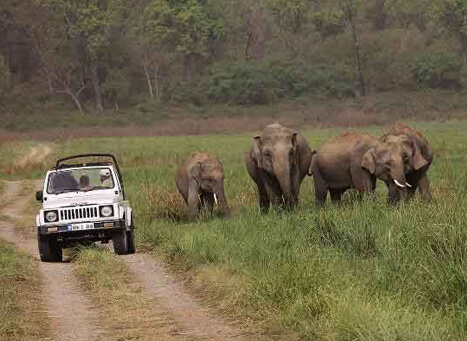
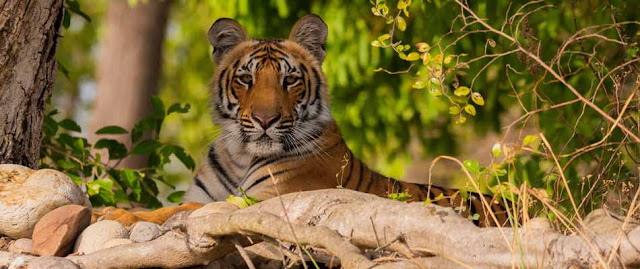
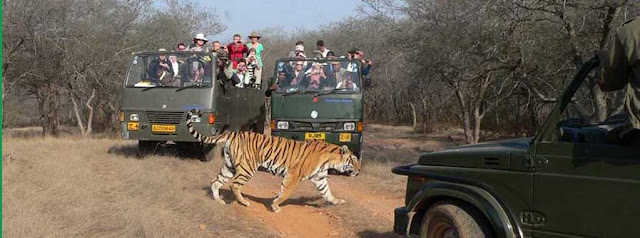
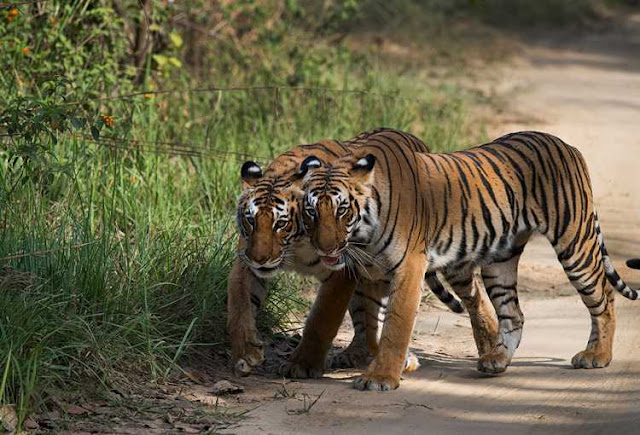
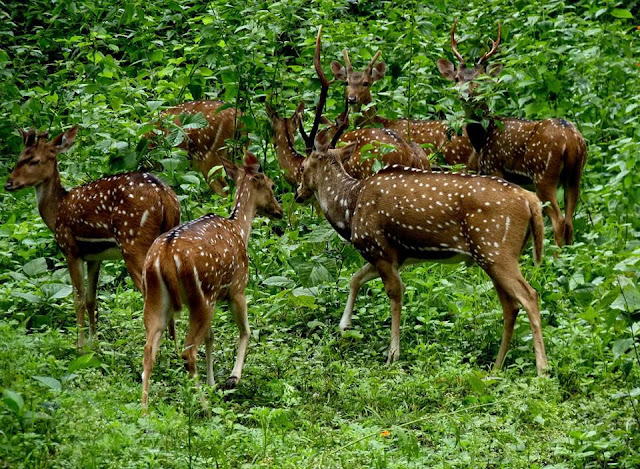

Comments
Post a Comment
Hi! Thank you for your valuable comments, we always except comment and suggestion for better improvement.